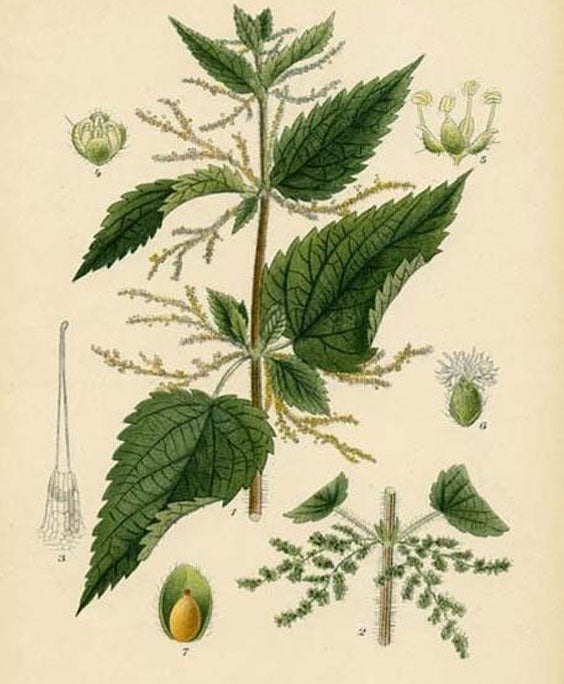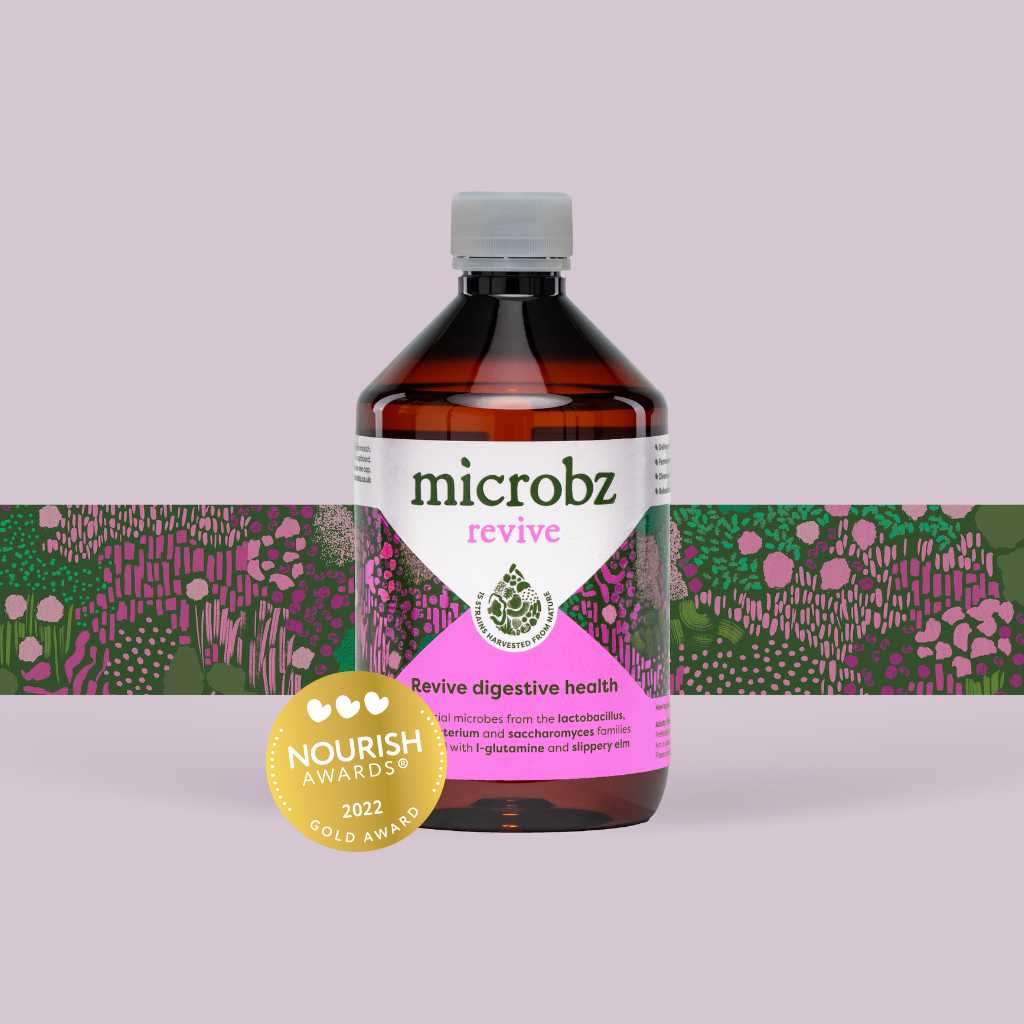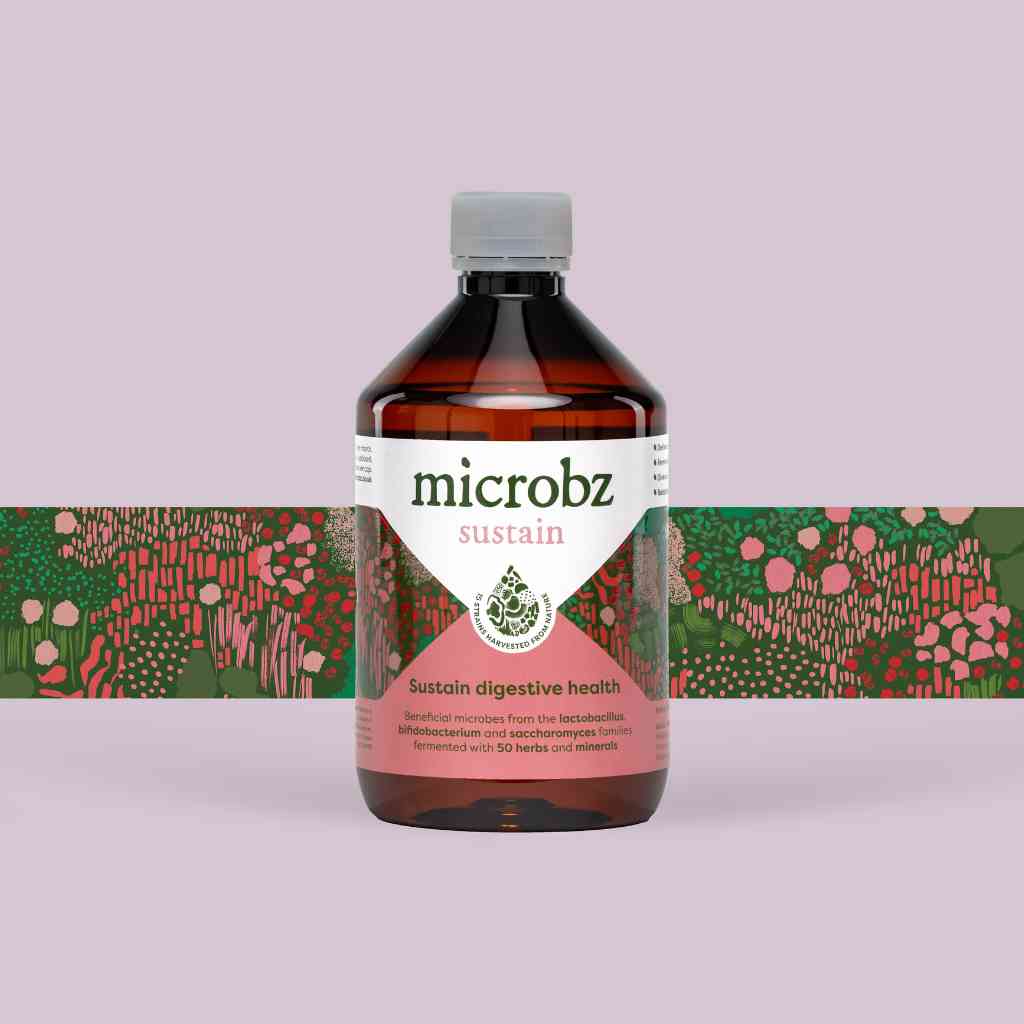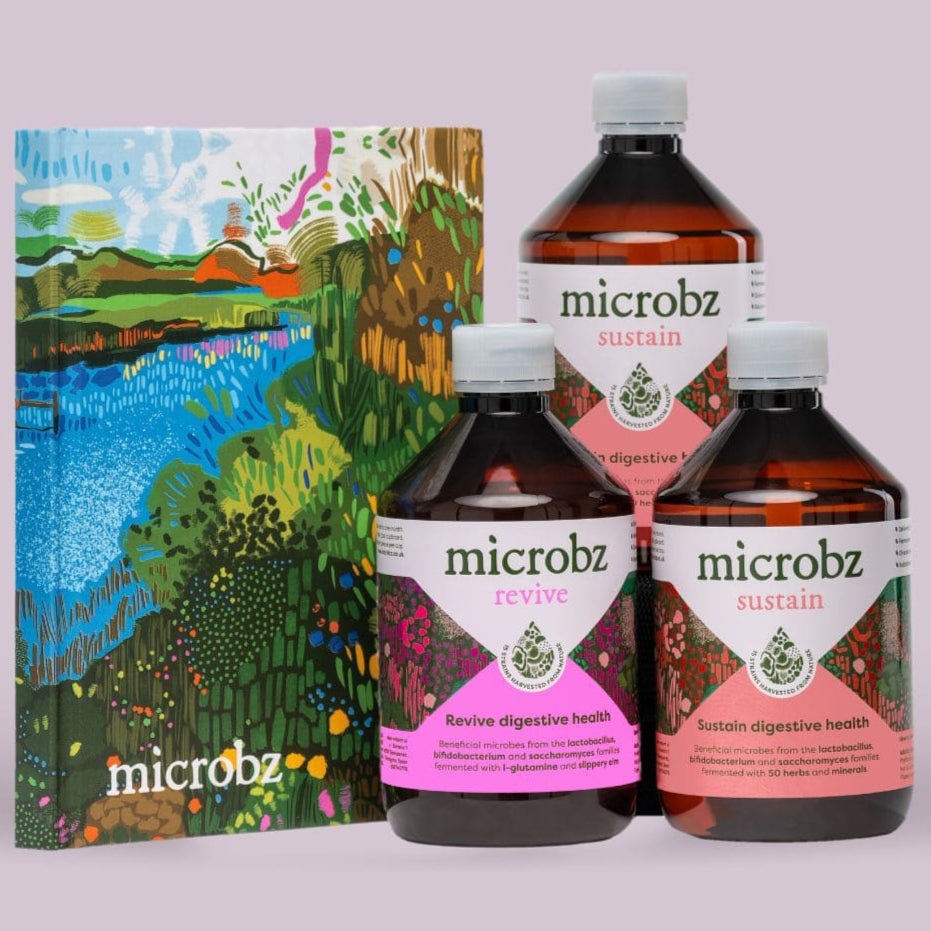Nettle
Urtica dioica

Family: Urticaceae
Which probiotic is it in?: Nettle is a key herb in Sustain.
Habit and cultivation: Mostly considered a weed that grows everywhere. Preferring nitrogen rich soil, it flowers from June to September.
Actions (known for): Leaf: anti-rheumatic, anti-allergic, depurative, styptic (haemostatic). Root: anti-prostatic.
History of Nettle
Parts used from the Nettle
Whole plant and root.
Constituents (bio available chemicals):
Leaf: still not defined but does contain: Flavonoids, amines, silicic acid and rich in chlorophyll. Root: Lignans, sterols (sitosterol), hydroxyfatty acids, lectins and fatty alcohols.
Nutritional constituents:
Vitamins: A, B2, C, E, K. Fresh leaf contains B1. Minerals: calcium, potassium salts, silicic acid, iron, manganese and copper.
Indications:
Leaf: Hay fever, dermatitis, urticaria, osteoarthritis, rheumatism and rheumatoid arthritis. Topically: wounds, ulcers and eczema. Root: Benign prostate hyperplasia (BPH) and chronic prostitis.
Dosage:
Leaf: Liquid extract (1:2): 15-40ml per week. Fresh tops can be cooked (as a soup) and eaten as nutritious vegetable leaf. Root: Liquid extract (1:2): 30-60ml per week.
British Herbal Pharmacopoeia
Cautions for therapeutic doses
The nettle can cause an allergic weal if stung. For a minority this can be severe. Cannot sting after being dried or cooked.




